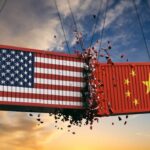
Ericsson is making a strong bet on India. The Swedish telecom giant plans to fully localise the production of passive antennas by June 2025. This move aims to boost local manufacturing, increase exports, and make India a key player in global telecom supply chains.
As companies look beyond China, India is stepping up as a credible alternative for telecom and electronics manufacturing. Ericsson is not just following the trend; it’s setting the pace by ramping up local production and transforming its India operations into a research hub for 5G, artificial intelligence (AI), and cloud technologies.

What does this mean for everyday people? It means better telecom infrastructure, more local jobs, and cheaper, faster internet. Plus, it signals India’s rising power in global tech, not just as a market but as an innovation center.
Andres Vicente, Ericsson’s head for Southeast Asia, Oceania, and India, said, “India is positioned like no other market to be the real alternative to the current Chinese ecosystem for innovation.” That’s no small statement coming from a global leader.
Ericsson’s plans include localising all passive antenna production by mid-2025. These antennas, crucial for 4G and 5G networks, will soon be made entirely in India. Alongside this, Ericsson is increasing sourcing of telecom components from local suppliers. The goal? Boost value addition in India and grow exports to other countries.
Also Read TECH STOCK BLOODBATH: Persistent, TechM Plunge 4% as US-China Trade War Escalates
Currently, Ericsson’s manufacturing partners in India include Jabil, which makes 4G and 5G equipment, and VVDN, which handles antennas. The VVDN deal even puts India on the same global map as Mexico, Romania, and China for Ericsson’s manufacturing footprint.
On the competition front, Vicente sees Vodafone Idea making a serious comeback. Supported by Ericsson, Vodafone Idea is preparing to launch 5G services in multiple cities, starting with Delhi-NCR. This move could shake up the telecom market by adding a strong third player alongside Airtel and Jio.
“India needs strong operators because it’s a huge market with 1.5 billion people hungry for innovation,” Vicente said. He pointed out that countries with similar populations typically have at least three big operators. Could Vodafone Idea become that third force? Ericsson certainly hopes so.
The executive also urged the Indian government to focus on technologies developed and regulated within the country. Preserving technology sovereignty means more local investment, jobs, and economic benefits. He stressed that terrestrial 5G networks, not just satellite, are vital for reliable, affordable coverage.
Ericsson employs 22,500 people in India, including 2,000 in research and development. This R&D focuses on future tech like 6G, AI, and network APIs. Ericsson’s vision is clear: India isn’t just a market anymore; it’s a global innovation hub.
Also Read HSBC Bets Big: Banking Giant Pledges $4 Billion Private Credit Expansion












